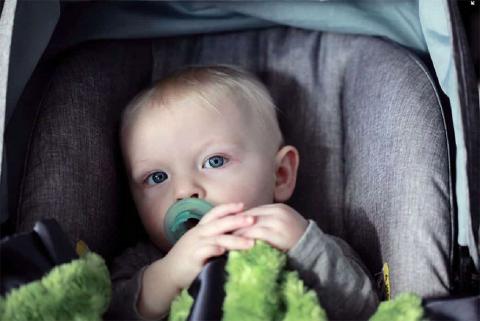Top 7 Tips for Car Seat Safety

Buckling your child in appropriate size and weight car seats, booster seats, and seat belts reduces the risk of death and serious injuries. According to the CDC's Child Passenger Safety Law Guide, the use of car seats reduces the risk of death to infants age 1 and under by 71% and toddlers, age 1-4 by 54%.
We understand the importance of making sure that you and your precious cargo arrive safely. That is why we wanted to provide you with important car seat safety information to help you do just that.
Face the Car Seat in the Correct Direction
For the best protection possible keep your baby in a rear-facing car seat until they have surpassed the recommended weight limit specified on their car seat. You can find the exact weight and height limits on the side or back of each car seat.
A rear-facing car seat offers the best protection for your child as it protects their head, neck, and spine. It is important to point out that children riding in a rear-facing car seat must always ride in the back seat and away from the airbag. This car seat requirement is for the safety of your child.
Once Your Child Outgrows the Car Seat
Once your child outgrows their rear-facing car seat then, they are ready for a forward-facing car seat. Outgrowing a car seat has to do with their height and weight, rather than what age they are. Remember to attach the top tether after you tighten and lock the seat belt or lower anchors. A top tether strap holds the top of a car seat in place and it adds extra protection. It is important to remember to use the tether at all times, as these have proven to reduce the car seats’ forward motion during a car accident thus reducing serious head and neck injuries.
Your child should remain in forward-facing car seats until they’ve outgrown it. Read your forward-facing car seats’ manual to determine the height and weight limits. Once your child has outgrown a forward-facing car seat, they can move on to a booster seat.
Remove Bulky Clothing
We recommend your child does not wear bulky clothing while they are restrained in the car seat. Winter coats or snowsuits can compress in a car crash and leave the straps too loose to fully restrain your child. Dress your child in thinner layers and drape a blanket or coat over the buckled harness straps to keep them warm.
Why it’s Important to Register Your Car Seat
Make sure to register your child's car seat, as this will ensure you get notification of any and all associated recalls. All you have to do is use the information that is located in the car seat's label. You can register your car seat here.
For your child’s safety, we encourage you to take a few minutes to register. Doing so could potentially prevent serious injury down the road.
How to Properly Install a Car Seat
We cannot stress enough how important it is to read your car seat’s instruction manual. Take the time to read the instructions thoroughly and make sure you clearly understand how to securely install the car seat. Learn about LATCH car seat basics.
Keep in mind that some cars have lower anchors built into the seats that can be used to attach a safety seat. Older cars may not have these and require the seat belt to secure the car seat. The vehicle owner’s manual will help you find what you need. If your vehicle doesn’t have lower anchors, refer to your owner’s manual to find out how to lock a seat belt once the car seat is in place.
Once the car seat is installed, give it a good tug at the base, where the seat-belt goes through it. Wiggle it side to side, back and forth. The car seat should not move more than 1 inch in any direction.
For rear-facing seats, it is important that the base of your car seat is level to prevent your child’s head from flopping forward. Most seats will have indicators on the side to help.
Inspecting Your Child’s Car Seat
Whether you’ve just installed a car seat or need any assistance, you can get help at a car seat inspection station near you. Certified technicians will inspect your car seat for proper installation and use. You can either call 866-SEAT-CHECK or type in your zip code to find a technician near you. It is not as common for fire stations and police stations to offer the service of inspecting people’s car seats or installing them. Call ahead to make sure there is a certified child passenger safety technician available to install your car seat.
We hope these car seat safety tips for parents have been helpful! We care about your safety while you are out on the road and want to provide you with the best advice possible to make sure you arrive safely.






